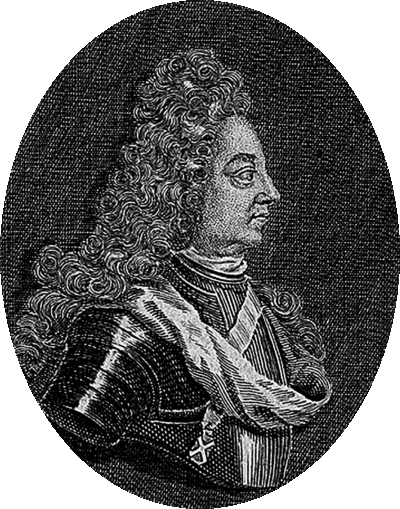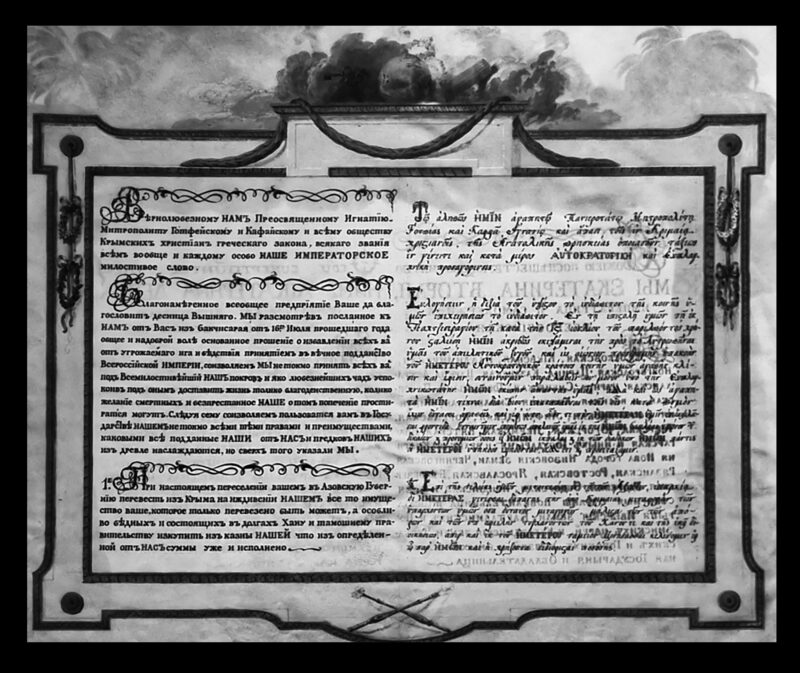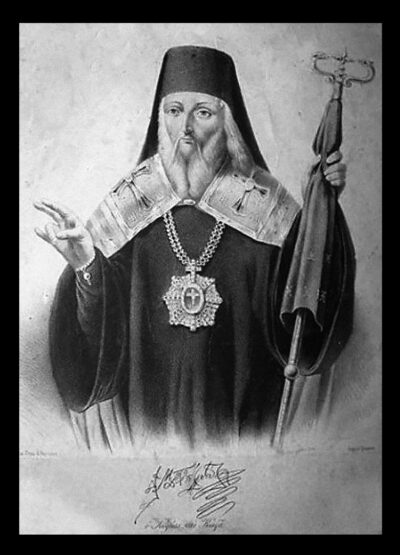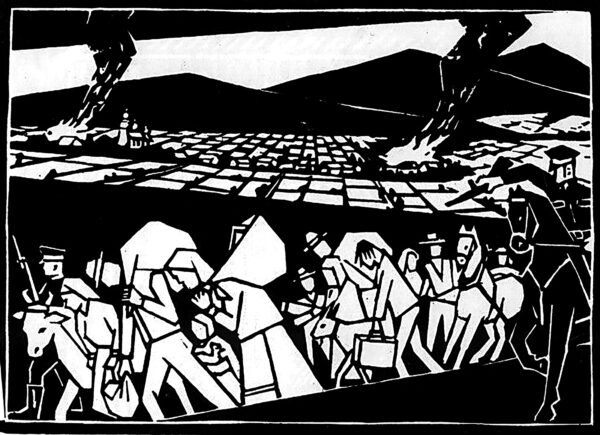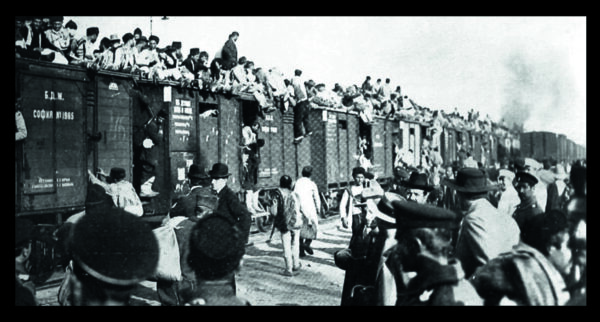Deportation is another criminal tool of Russia in the process of enslaving and exterminating peoples in the occupied Ukrainian lands.
Under Peter I, according to his order, the “Resettlement of the population from Right-Bank Ukraine to Left-Bank Ukraine” was carried out.
In December 1711 – January, February 1712, from an area of 35 thousand square kilometers, a cavalry corps of five regiments and several irregular military units under the command of General Karl Ewald von Renne and the direction of Field Marshal Boris Sheremetyev deported from 100 to 200 thousand Ukrainians.
To prevent their return, the military completely destroyed and burned down every single house. In the new location, people were abandoned to their fate. The number of victims is unknown.
In 1778, Ekaterina II, who was very close to the first occupation and annexation of the Crimea, ordered the deportation of more than 31,000 Christians from the Crimea. These were mainly Greeks, Armenians, Georgians and Vlachs. The military forcibly loaded people onto carts and took them to the steppes, to the area of the future Mariupol, Rostov, Taganrog, and Novoselytsia. Attempts at disobedience were suppressed by murder.
The ground for this was prepared by a Russian intelligence operation. Without official justification, the Patriarch of Constantinople appointed Ignatius Gozadini, who is associated with Russia, as Metropolitan of Crimea, also known as Saint Ignatius of Mariupol.
Gozadini immediately appealed to Ekaterina with a request to accept the Crimean Christians “under the sovereign’s hand.” Later, Ekaterina II awarded Gozadini with three thousand rubles and a silver panagia, which he wore instead of a cross, contrary to the canons.
The official justification was Russian disinformation about “fraternal assistance” in rescuing Christians from Muslim persecution.
In fact, religious tolerance reigned in the Crimea at that time; representatives of different faiths conducted business together, and formed mixed marriages. Three higher Orthodox theological schools operated in the Crimea.
“Christians came out with bitter sobs, ran, hid in forests and caves, and even converted to Islam, just to stay in their native land.”
Olexandr Bertier-Delagard. Researcher of the Crimea
Thus, the historical culture of 80 settlements and authentic districts in the cities of the Crimea was destroyed. Ekaterina II ordered: “Force the people to swarm in our deserted areas.”
The deportation was intended to undermine the economy of the Crimea and drive out the Ukrainian Cossacks from the southern lands.
“Entire families suffered, and many lost theirs… of the 9,000 male inhabitants not even a third remained…” – from a letter from the Greeks to the Russian government about the consequences of the deportation.
The number of victims is also unknown.
During World War I, Russia carried out mass deportations from the occupied territories of western Ukrainian lands.
During 1915-1916, 150,000 German colonists from almost 500 colonies were deported from Volyn to Siberia, the Volga region, the Caucasus, and the Urals regions. The Russians also deported Czechs, Jews, and Poles from many areas.
13,000 Ukrainians were forcibly deported deep into Russia in 1914-1915. Repressions were massively practised against Greek Catholics (including Metropolitan Andrei (Sheptytsky). While retreating from the occupied Ukrainian lands of Galicia, Kholm, Podlasie, Volyn and Berest, Russian troops deported the Ukrainian population and destroyed household and residential buildings.
In 1918-1922, hundreds of thousands of people were deported from Russian-occupied Ukraine.
During the so-called “collectivization” and “dekulakization” of the 1930s, more than 63,000 wealthy families were forcibly deported from Ukraine to harsh conditions in Siberia, the Urals, Yakutia and the Far East.
The forced transportation was accompanied by shootings for disobedience (even for trying to take a photo of their own house as a keepsake). Elderly people were often separated from their families, not taken out and left to their fate because they posed no threat to the occupation regime.
In total, 400 thousand households were “dekulakized” in the territories of the so-called USSR, that is, ravaged and plundered. The total number of people deported in the USSR during these years, according to various estimates, reaches 10–11 million people, of whom approximately a third died. The mass destruction of successful agricultural production in Ukraine was one of the prerequisites for the Holodomor.

